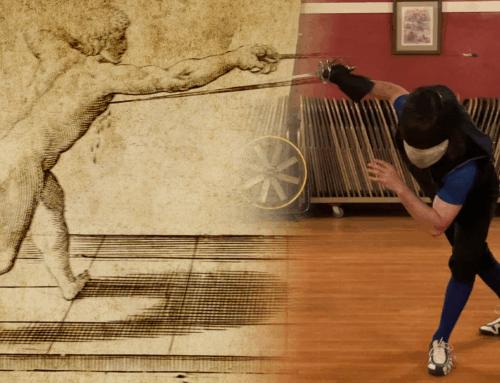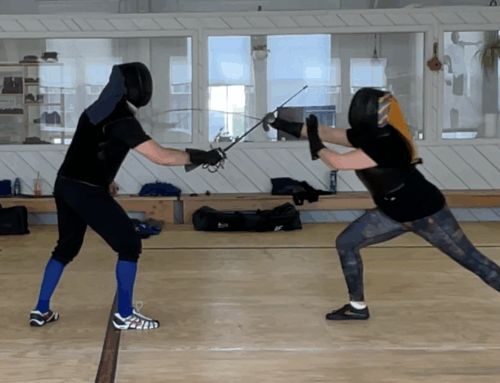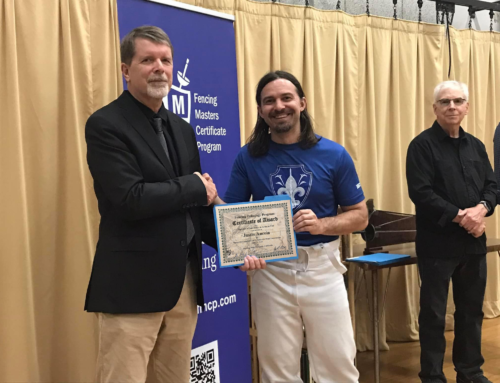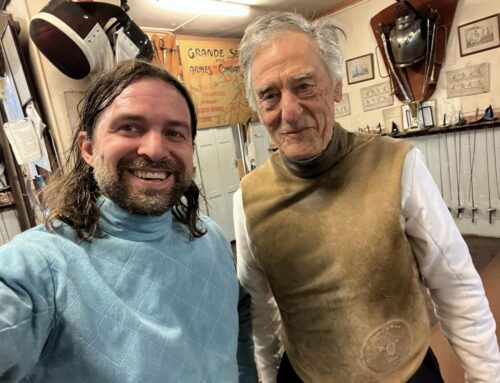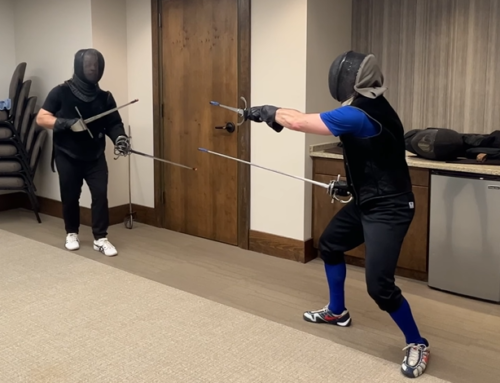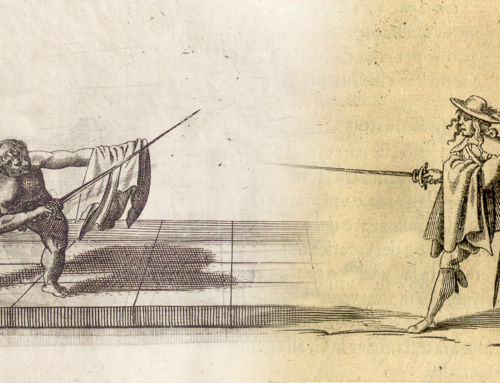Today we’ll be looking at the plays in Plate 13 of La Scherma by Francesco Ferdiando Alfieri. You can snag a copy over on Amazon if you want to follow along.
You can also find the rest of my Alfieri & other historical rapier research over in the Historical Fencing section.
In today’s chapter, we go over Alfieri’s ideas for combating opponents who like to circle — aka Destreza fighters.
La Verdadera Destreza is the Spanish school of fencing which can be marked by its upright stance and penchant for circling opponents to gain blade & measure advantage. For additional information on Destreza, I highly recommend the blog Black Birds and Blades. It’s run by my friend Doroga who has put tireless amount of hours and effort into researching different Destreza masters.
It’s a fun and interesting style of fence.
Of course, stepping off-line isn’t saved for just Spanish school of fencers. You run into with a wider variety of opponents, even those who concentrate in the Italian schools. Destreza just happens to be known for its circling.
Intro
Alfieri begins, like most Italian masters do, by dumping on the idea of trying to gain advantage by encircling. Specifically, Alfieri says that it’s “dangerous to attack while encircling” because the fencer who’s standing firm (I’m interpreting this as still) is better positions to:
- Find openings to attack
- Find the right tempo to attack
The Plays
Play #1. Gentleman 24 is in terza and has tried encircling Gentleman 25 several times in order to land a clean blow. Gentleman 25, who has remained motionless but to keep his point on line with Gentleman 24, attacks when Gentleman 24 comes into measure. Gentleman 25 attacks with a firm foot (a lunge) in seconda under their sword arm.
Depending on your height, getting below a Destreza‘s sword arm may be easier/more difficult. It’s important to keep your head below & behind your guard.
I’ll also note that Gentleman 25 is using a closed guard in this. It’s one of the few times a closed guard is shown in a plate, but Alfieri also uses the phrase tutta coperta a couple of times in his manual. Tutta coperta translates into “totally covered” which would fit as an accurate description for a closed guard. Alfieri doesn’t break down how tutta coperta ever works or looks like in the manual, however.
Play #2. When Gentleman 24 comes into measure Gentleman 25 can also attack in several ways…
- High along Line A in quarta
- Feint on the inside line and wound high on the outside line along Line A above the sword in seconda
Feint on the inside line and wound with a mandritto cut (R-L) on the lead leg.
I’m a little unsure on #3 if it should include the feint or not. It’s a little ambiguous in the text the way it’s written but the play should work either way. It’s also the least preferable option.
Play #3. Alfieri provides three more “additional” plays. I guess he really wants to rub it into the circle fighters.
- Gentleman 25 feints high along Line A on the outside line. Gentleman 24 goes to parry. Gentleman 25 then drops into seconda under Gentleman 24’s sword arm (like the main plate).
- If Gentleman 24 makes his parry, Gentleman 25 can perform a cavazione and strike.
- If Gentleman 25 finds Gentleman 24’s sword (inside or outside line), and Gentleman 24 moves to cavazione, Gentleman 25 can strike in tempo.
- Gentleman 25 provides an opening. Gentleman 24 moves to attack said opening. Gentleman 25 parries with his left hand and attacks.
This is the first time Alfieri mentions parrying with the off-hand when it has no weapon in it. He doesn’t go into why using the off-hand is fine here and not moments.






